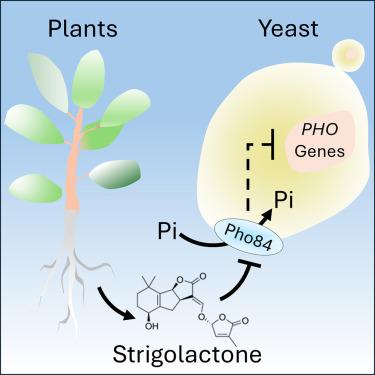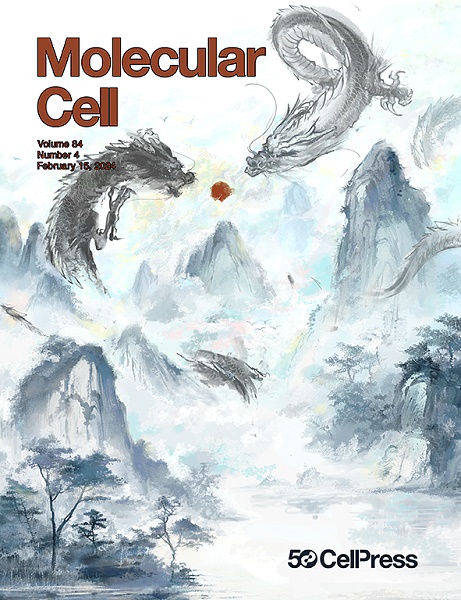植物激素绞股蓝内酯对真菌磷酸盐平衡的调节作用
IF 14.5
1区 生物学
Q1 BIOCHEMISTRY & MOLECULAR BIOLOGY
引用次数: 0
摘要
通过小分子进行王国间交流对生态系统中生物的共存至关重要。在土壤群落中,植物根部是大量真菌相互作用的纽带,也是影响真菌组成的小分子植物激素的来源。虽然植物中已经建立了激素信号通路,但真菌如何感知和响应这些分子尚不清楚,因为许多与植物相关的真菌不愿意接受实验。在这里,我们利用模式真菌酿酒酵母(Saccharomyces cerevisiae)来阐明真菌对植物激素的反应机制。绞股蓝内酯和茉莉酸甲酯这两种植物激素会在酵母中产生独特的转录谱,分别影响磷酸盐和糖的代谢。遗传分析结合结构研究表明,SLs 需要高亲和性转运体 Pho84 来调节磷酸盐的平衡。在可控的遗传系统中研究小分子植物激素的能力应有助于了解真菌与植物之间的相互作用。本文章由计算机程序翻译,如有差异,请以英文原文为准。

Modulation of fungal phosphate homeostasis by the plant hormone strigolactone
Inter-kingdom communication through small molecules is essential to the coexistence of organisms in an ecosystem. In soil communities, the plant root is a nexus of interactions for a remarkable number of fungi and is a source of small-molecule plant hormones that shape fungal compositions. Although hormone signaling pathways are established in plants, how fungi perceive and respond to molecules is unclear because many plant-associated fungi are recalcitrant to experimentation. Here, we develop an approach using the model fungus, Saccharomyces cerevisiae, to elucidate mechanisms of fungal response to plant hormones. Two plant hormones, strigolactone and methyl jasmonate, produce unique transcript profiles in yeast, affecting phosphate and sugar metabolism, respectively. Genetic analysis in combination with structural studies suggests that SLs require the high-affinity transporter Pho84 to modulate phosphate homeostasis. The ability to study small-molecule plant hormones in a tractable genetic system should have utility in understanding fungal-plant interactions.
求助全文
通过发布文献求助,成功后即可免费获取论文全文。
去求助
来源期刊

Molecular Cell
生物-生化与分子生物学
CiteScore
26.00
自引率
3.80%
发文量
389
审稿时长
1 months
期刊介绍:
Molecular Cell is a companion to Cell, the leading journal of biology and the highest-impact journal in the world. Launched in December 1997 and published monthly. Molecular Cell is dedicated to publishing cutting-edge research in molecular biology, focusing on fundamental cellular processes. The journal encompasses a wide range of topics, including DNA replication, recombination, and repair; Chromatin biology and genome organization; Transcription; RNA processing and decay; Non-coding RNA function; Translation; Protein folding, modification, and quality control; Signal transduction pathways; Cell cycle and checkpoints; Cell death; Autophagy; Metabolism.
 求助内容:
求助内容: 应助结果提醒方式:
应助结果提醒方式:


